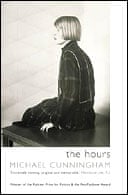"Shall we for ever make new books, as apothecaries make new mixtures, by pouring only out of one vessel into another?" This is the plaintive question asked in Laurence Sterne's Tristram Shandy. Except that it is plagiarised from Robert Burton's Anatomy of Melancholy, one of Sterne's favourite books. Burton himself mocked writers who "lard their lean books with the fat of others' works", but we like to admire judicious larceny. The scholars who first discovered Sterne's "borrowings" were shocked at his thieving; today's academics, in contrast, revel in his novel's "intertextuality".
"Intertextuality", coined by the French critic Julia Kristeva in the 1960s, is one of those rare terms of literary theory that has migrated into the mainstream media. Recently Channel 4 arts pundits were sagely muttering the word as they discussed the Turner prize shortlist. It was once the word with which theorists declared that any piece of writing referred to other pieces of writing, rather than to any world beyond texts. Now it is shorthand for almost any kind of allusiveness or imitation.
The Hours as a whole represents a special kind of intertextuality, where one work proceeds as a homage to another particular work. It is inspired by, and follows the patterns of, Virginia Woolf's Mrs Dalloway. This wholescale fidelity is rare. Perhaps the most successful example of recent years is Jane Smiley's A Thousand Acres, which closely follows King Lear. However, intertextuality has its smaller varieties, such as simple quotation.
Cunningham's fictionalised Virginia Woolf, approaching a breakdown, leaves her Richmond home one evening without telling her husband, and walks to the station. "She will go, she thinks, to London." She is running away, from her marriage and her demons. "What a lark! What a plunge!" To catch her thoughts, the novelist lifts these famous exclamations from the opening paragraph of Mrs Dalloway. Yet the girlish jollity of Clarissa Dalloway's interior monologue, on a fresh morning in June on the day of a party, is exactly inappropriate here, with her creator on the edge of desperation.
Then there is allusion. The dying Richard tells Clarissa that he has been hearing furies, singing to him in a foreign language. "I believe it may have been Greek. Archaic Greek." The reader of Mrs Dalloway recalls the shell-shocked Septimus Warren Smith. In Woolf's novel he sits in Regent's Park and hears sparrows singing "in voices prolonged and piercing in Greek words, from trees in the meadow of life beyond a river where the dead walk, how there is no death". He will kill himself before the end of the book, as Richard will before the end of The Hours. Unlike the first readers of Mrs Dalloway, Cunningham's reader might know from biography about Woolf's own delusions - the "voices" she heard in her bouts of madness.
Cunningham uses what was called in the 17th and 18th centuries "imitation": the making contemporary of some esteemed original - a translation that is an updating. Clarissa Vaughan's walk through Manhattan is meant to evoke Clarissa Dalloway's shopping trip in London and to show us how Woolf has given a model for the pleasures of urban pedestrianism.
And The Hours has parody. In Woolf's novel, Clarissa Dalloway's daughter Elizabeth is attached to the frighteningly feminist (and crudely named) Doris Kilman. She despises Mrs Dalloway's easy ways and easy life. "Fool! Simpleton! You who have known neither sorrow nor pleasure, who have trifled your life away! And there arose in her an overmastering desire to overcome her; to unmask her."
In The Hours Clarissa Vaughan's daughter Julia has an older lover (also balefully named), Mary Krull. She is a "stern and rigorous" New York lesbian, disdainful of Clarissa's Bloomsbury-style civilities. "Fool, Mary thinks, though she struggles to remain charitable or, at least, serene. No, screw charity. Anything's better than queers of the old school, dressed to pass, bourgeois to the bone, living like husband and wife."
The Hours also has echoes and burlesques and citations. The best thing about Cunningham's book, indeed, is that it lets us see how many different ways one work may draw on another - how many different literary techniques "intertextuality" bundles together and therefore often obscures.
· John Mullan is senior lecturer in English at University College London
· Have your say about The Hours on the Guardian talkboards or write to The Review, The Guardian, 119 Farringdon Road, London EC1R 3ER
